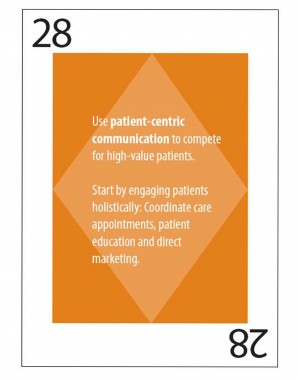Healthcare Pros Explore Patient-Centered Care
 Last year we developed a deck of 52 marketing tips and collected more from our peers at SHSMD. A big “thank you” goes to Lisa Crockett, Manager of Strategy and Business Development at Providence Health & Services for this month’s Healthcare Marketing Tip:
Last year we developed a deck of 52 marketing tips and collected more from our peers at SHSMD. A big “thank you” goes to Lisa Crockett, Manager of Strategy and Business Development at Providence Health & Services for this month’s Healthcare Marketing Tip:
“Before starting any marketing effort, think about what patients will experience.”…

Read more




